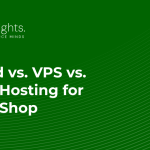1. Understanding eCommerce
1.1 Definition of Sustainable eCommerce
Sustainable eCommerce involves conducting online business operations with minimal negative impact on the environment. It emphasizes practices like eco-friendly sourcing, low-emission shipping, ethical labor, and energy-efficient digital presence. In the modern retail landscape, sustainability is not just a value-add but a necessity. Consumers, investors, and even governments are increasingly holding brands accountable for their environmental footprint.
1.2 The Environmental Impact of eCommerce
Online shopping, while convenient, contributes significantly to carbon emissions through warehousing, shipping, and returns. Excess packaging adds to landfills, and inefficient logistics create more pollution. Studies show that eCommerce packaging waste contributes over 30% to landfill waste in some countries. Moreover, the rise of fast fashion and impulse buying has amplified the environmental toll.
1.3 Customer Awareness and Trend Towards Sustainability
Modern consumers are more conscious of their environmental impact. According to a Nielsen report, 73% of global consumers say they would change their consumption habits to reduce environmental impact. Brands practicing sustainability are more likely to gain trust and loyalty. A strong sustainability message resonates particularly well with Gen Z and Millennials.
2. Implementing Sustainable Practices in Your Supply Chain
2.1 Sourcing Sustainable Materials
Choose raw materials that are recyclable, biodegradable, or renewable. Examples include organic cotton, bamboo, and recycled metals. Patagonia is a leading example, sourcing nearly all of its cotton from organic farms. Ask suppliers for certifications like GOTS (Global Organic Textile Standard) or FSC (Forest Stewardship Council).
2.2 Reducing Waste in Packaging
Sustainable packaging doesn’t just mean using recycled boxes—it’s about minimizing waste at every step. Consider:
- Right-sized packaging to reduce filler
- Compostable mailers or cornstarch-based alternatives
- Reusable boxes or bags for repeat customers Brands like Package Free and Lush have popularized zero-waste packaging, driving change across industries.
2.3 Sustainable Shipping Options
Green shipping includes methods that reduce emissions, such as:
- Partnering with carbon-neutral carriers
- Offering slower shipping options to consolidate deliveries
- Using local distribution centers to cut down travel distance Companies like DHL and UPS offer green shipping programs with carbon offsetting.
3. Building a Sustainable Online Presence
3.1 Eco-Friendly Web Hosting Solutions
Green hosting providers use renewable energy to power data centers. Popular options include GreenGeeks and A2 Hosting. Optimizing your website to be lightweight and fast also reduces server load and power consumption.
3.2 Green Marketing Strategies
Promote sustainability authentically:
- Highlight eco-certifications, but avoid greenwashing
- Share behind-the-scenes content on sustainable efforts
- Feature user-generated content about eco-friendly purchases Create campaigns around Earth Day, Plastic-Free July, or World Environment Day to amplify impact.
3.3 Transparency and Reporting Practices
Customers want honesty. Share sustainability reports, goals, and challenges openly. Use platforms like EcoCart or Carbonfund.org to track and display carbon footprint data. Transparency builds trust and fosters long-term loyalty.
4. Cultivating Customer Loyalty Through Sustainability
4.1 Engaging Customers in Sustainable Practices
Encourage green behavior:
- Incentivize returning packaging for reuse
- Offer discounts for eco-conscious purchases
- Provide education on sustainability via blog or email Examples: H&M’s garment collection program rewards customers for recycling clothes.
4.2 Building Community and Brand Affinity
Create a community of like-minded consumers:
- Host webinars or online challenges around eco-living
- Collaborate with environmental influencers or nonprofits
- Support local cleanup events or plant-a-tree initiatives A sense of shared purpose deepens customer connection.
4.3 Leveraging Customer Feedback for Continuous Improvement
Use surveys, reviews, and polls to understand customer expectations. What do they care about most—packaging, shipping, sourcing? Incorporate their suggestions into your strategy and communicate those updates.
5. Measuring the Success of Your Sustainable eCommerce Strategy
5.1 Key Performance Indicators (KPIs) for Sustainability
Track progress using:
- Reduction in packaging material usage
- % of products with eco-certifications
- Emission offsets or reductions
- Customer retention and satisfaction scores
5.2 Case Studies of Successful Sustainable Brands
Brands like Allbirds, Patagonia, and The Body Shop showcase how sustainability drives profit and brand loyalty. These companies focus on ethical production, transparency, and low-impact logistics—proof that green practices are scalable and effective.
5.3 Future Trends in Sustainable eCommerce
Expect growth in:
- Circular economy models (resale, repair, reuse)
- AI-powered supply chain optimization
- Blockchain for traceability and sustainability proof
- Hyperlocal logistics to reduce emissions
Conclusion
Sustainable eCommerce is no longer optional—it’s an integral part of future-ready retail. From supply chain to website to marketing, every touchpoint offers an opportunity to make greener choices. Brands that lead with values and align with customer expectations will not only win loyalty but also make a lasting positive impact.
FAQs
What are the first steps to make my eCommerce business more sustainable? Start with packaging, then optimize shipping, and explore green hosting. Audit your current practices and set clear sustainability goals.
How can I measure the environmental impact of my current practices? Use tools like EcoCart or the Carbon Trust Calculator. Track carbon emissions, packaging usage, and customer feedback.
Are there certifications for sustainable eCommerce I should pursue? Yes, look into B Corp, GOTS, FSC, and Fair Trade certifications.
How can small businesses implement sustainability on a budget? Start small—use recycled materials, offer slower shipping, and host your site with a green provider.
What do customers want to see from brands in terms of sustainability? Transparency, action, and results. They value honest communication, eco-conscious choices, and progress updates.



